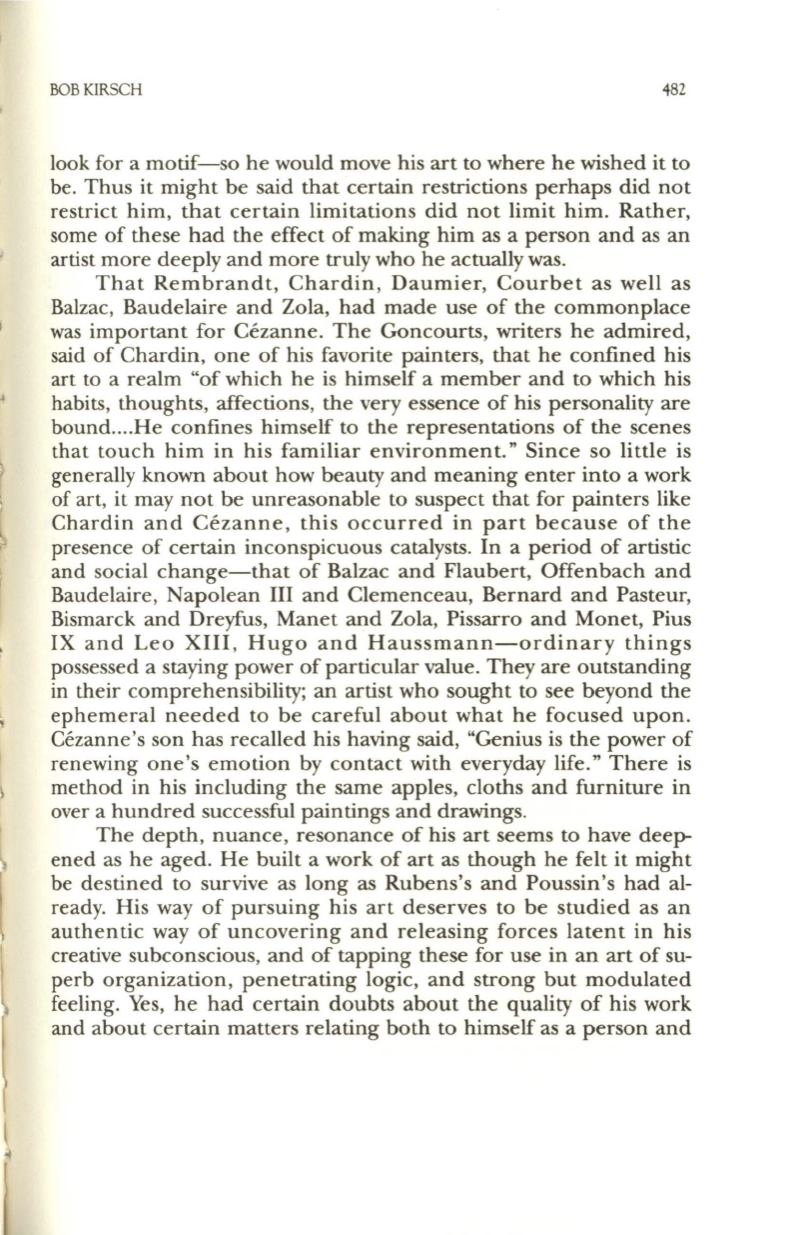
BOB KIRSCH
482
look for a motif-so he would move his art to where he wished it to
be. Thus it might be said that certain restrictions perhaps did not
restrict him, that certain limitations did not limit him. Rather,
some of these had the effect of making him as a person and as an
artist more deeply and more truly who he actually was.
That Rembrandt, Chardin, Daumier, Courbet as well as
Balzac, Baudelaire and Zola, had made use of the commonplace
was important for Cezanne. The Goncourts, writers he admired,
said of Chardin, one of his favorite painters, that he confined his
art to a realm "of which he is himself a member and to which his
habits, thoughts, affections, the very essence of his personality are
bound.. ..He confines himself to the representations of the scenes
that touch him in his familiar environment." Since so little is
generally known about how beauty and meaning enter into a work
of art, it may not be unreasonable to suspect that for painters like
Chardin and Cezanne, this occurred in part because of the
presence of certain inconspicuous catalysts. In a period of artistic
and social change-that of Balzac and Flaubert, Offenbach and
Baudelaire, Napolean III and Clemenceau, Bernard and Pasteur,
Bismarck and Dreyfus, Manet and Zola, Pissarro and Monet, Pius
IX and Leo XIII , Hugo and Haussmann-ordinary things
possessed a staying power of particular value. They are outstanding
in their comprehensibility; an artist who sought to see beyond the
ephemeral needed to be careful about what he focused upon.
Cezanne 's son has recalled his having said, "Genius is the power of
renewing one 's emotion by contact with everyday life." There is
method in his including the same apples, cloths and furniture in
over a hundred successful paintings and drawings.
The depth, nuance, resonance of his art seems to have deep–
ened as he aged. He built a work of art as though he felt it might
be destined to survive as long as Rubens's and Poussin's had al–
ready. His way of pursuing his art deserves to be studied as an
authentic way of uncovering and releasing forces latent in his
creative subconscious, and of tapping these for use in an art of su–
perb organization, penetrating logic, and strong but modulated
feeling. Yes, he had certain doubts about the quality of his work
and about certain matters relating both to himself as a person and


